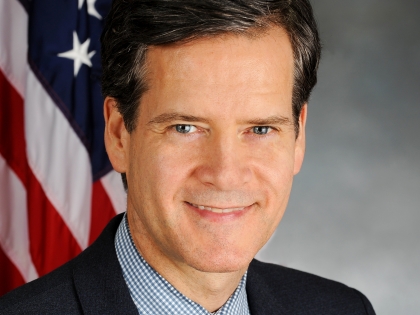
Comments by State Senator Brad Hoylman before the MTA Public Meeting on the Central Business District Tolling Program
September 23, 2021
-
ISSUE:
- senator brad hoylman
- SD 27
- Congestion Pricing
- Central Business District Tolling Program
- Improving Transportation
I’m State Senator Brad Hoylman and I represent New York’s 27th Senate District. My district, which extends from 72nd Street to Canal Street on the West Side, and 56th to Third Street on the East Side, is nearly entirely subsumed by the boundaries of the Central Business District Tolling Program. I’m extremely proud to have been a long-time champion of congestion pricing and thank you for the opportunity to comment on this revolutionary change in the way we manage and regulate traffic in Manhattan.
At the outset, I strongly support the inclusion of a Manhattan resident, preferably someone who lives within the pricing zone, on the Traffic Mobility Review Board (the “TMRB”) to represent New Yorkers most directly impacted by congestion pricing. In addition, I urge the MTA and the TMRB to consult our local Manhattan community boards for the citing of gantries and toll cameras necessary for the implementation of the program.
We need congestion pricing now, without further delay. Congestion pricing is important to address the harmful impact of vehicle emissions on public health and the environment. Congestion pricing has been forecast to save up to $100 million in health cost savings annually in New York City. Fossil fuel consumption and CO2 emissions will be cut, as well. London, which implemented its original congestion pricing scheme in 2003 has seen a reduction in these indices by 20 percent.
We need congestion pricing to improve the safety of our streets. As I’m sure you’re well aware, New York City is in a street safety crisis. This year, there have been at least 193 traffic fatalities, putting 2021 on pace to be the deadliest year since the launching of Vision Zero seven years ago. By reducing traffic congestion, we’ll reduce cars and car crashes, making streets safer for pedestrians, cyclists and motorists, alike.
In addition, congestion pricing promises to be a financial lifeline for our struggling mass transit system, which is reeling from the impact of dramatically lower ridership during the pandemic. Congestion pricing will help to modernize our subway and bus system, decrease commute times and increase accessibility for New Yorkers with disabilities.
Finally, traffic is responsible for tremendous economic costs that will be curtailed through congestion pricing. According to the Partnership for New York City, congestion pricing can save up to $20 billion in congestion related costs to our regional economy. This economic impact is more important than ever as our local economy struggles to recover from the mass unemployment and business interruption caused by COVID-19.
As a public official who represents over a hundred thousand constituents in the congestion pricing zone, I appreciate the framework in the enacting legislation, which included a toll-free perimeter along the West Side Highway and FDR Drive, a tax credit for New Yorkers making below $60,000 annually, and exemptions for emergency vehicles and vehicles transporting people with disabilities.
While this is a good starting point, additional exemptions must be considered by the TMRB. In the Senate, I am introducing Assembly Member Harvey Epstein’s legislation (A. 6598) that would establish a toll exemption for residents within the congestion pricing zone whose household incomes are equal or less than 120% of the Area Median Income (about $100,000). Also, the TMRB must pay special attention to ensure that disabled New Yorkers aren’t disadvantaged by congestion pricing, including clarity on how the vehicle exemption for people with disabilities will work. I urge the TMRB to consult with disability advocacy organizations on this issue.
The TMRB should consider additional, limited exemptions to improve the current framework. I urge the TMRB to examine London’s successful pricing scheme to help determine possible exemptions or fee reductions for residents within the pricing zone, mopeds, electric vehicles and patients and staff of hospitals and medical institutions, seven of which are located in my Senate district alone.
The enacting legislation requires congestion pricing to raise at least $15 billion for the MTA. This means that any exemptions and discounts must be recouped elsewhere through higher fees. Variable pricing structures can be helpful in this regard, and again, London serves as a useful model. Pricing must be communicated in a timely and clear fashion.
It’s critical that the congestion pricing system be evaluated on an ongoing basis for the benefit of the public and decision makers. Key to this evaluation will be defining metrics for tracking the equity goals of this program, specifically with regard to low-income residents and people with disabilities. I encourage the TMRB to consider a tracking dashboard so that the program can be transparent and held accountable. Changes may need to be implemented to address any unintended consequences, such as the need for residential parking permits to address parking near the congestion pricing zone borders.
Thank you for the opportunity to speak at this public meeting. I look forward to continued collaboration during this important planning period.
# # #